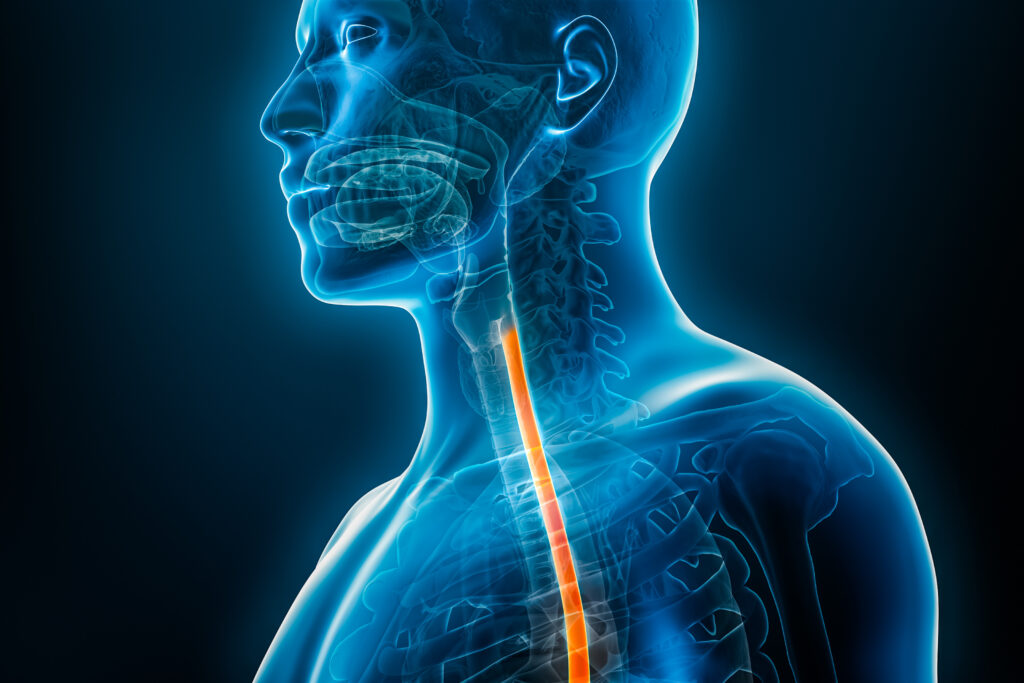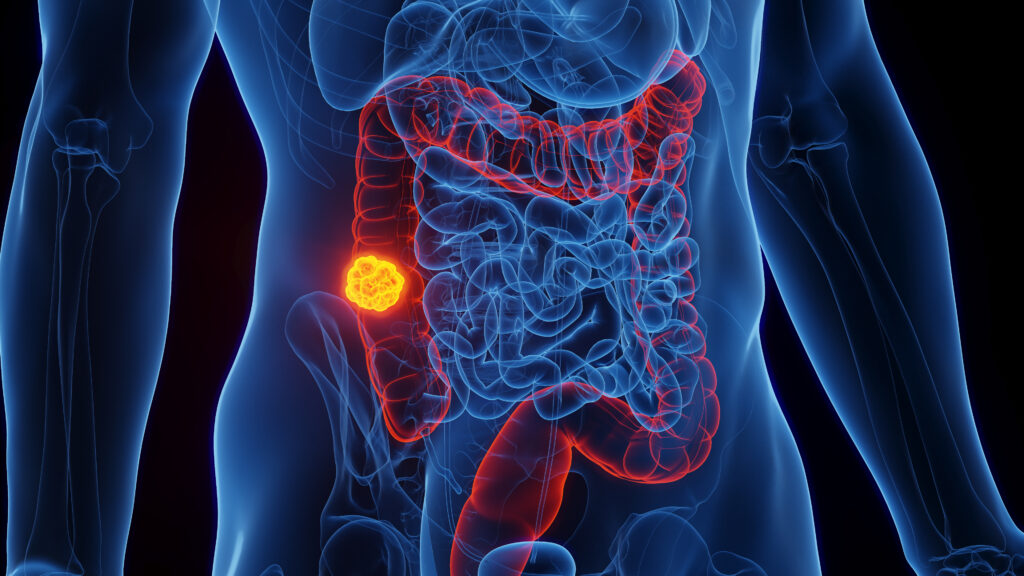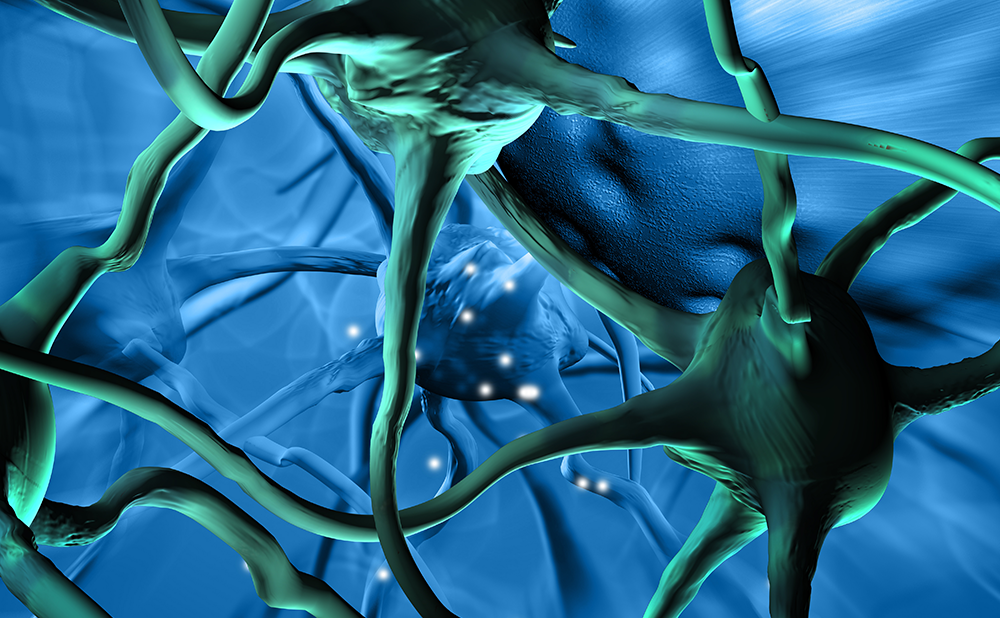Hepatocellular carcinoma (HCC) is the sixth most common cause of cancer, and its incidence is increasing worldwide because of the dissemination of hepatitis B and C viral infections.1 In most solid malignancies, tumour stage at presentation determines prognosis and treatment management. However, most patients with HCC have two diseases – liver cirrhosis and HCC – and complex interactions between the two have major implications for prognosis and treatment choice. Patients with Child-Pugh A or B cirrhosis, an Eastern Cooperative Oncology Group (ECOG) performance status of zero and a solitary tumour or up to three nodules smaller than three centimetres in size are classified as early-stage by the Barcelona Clinic Liver Cancer (BCLC) staging system.2 Those with an asymptomatic multinodular tumour showing neither vascular invasion nor extra-hepatic spread comprise the intermediate stage. Patients who present with cancerrelated symptoms and/or with vascular invasion or extra-hepatic spread are classified as advanced-stage. The terminal stage includes patients who have severe hepatic decompensation (Child-Pugh C) or ECOG performance status greater than two.
Loco-regional therapies play a major role in the current therapeutic management of HCC. Image-guided percutaneous ablation is established as the best therapeutic choice for patients with early-stage HCC when surgical resection or liver transplantation are precluded.3,4 Transarterial chemo-embolisation (TACE) is the standard of care for patients at the intermediate stage.4,5 Despite the advances in interventional treatments, long-term outcomes of patients treated with loco-regional therapies remain unsatisfactory because of the high rate of tumour recurrence. The recent addition of molecular-targeted drugs that inhibit tumour proliferation and angiogenesi, to the therapeutic armamentarium has opened new prospects in the treatment of HCC and warrants a sharpened multidisciplinary approach to patient management to optimise treatment options across all stages of the disease. In this article, current and new loco-regional treatments for HCC are reviewed, and potential synergies between interventional approaches and molecular-targeted therapies are discussed.
Image-guided Ablation
Image-guided percutaneous ablation is currently accepted as the best therapeutic choice for non-surgical patients with early-stage HCC.3,4 Over the past two decades, several methods for chemical ablation or thermal tumour destruction through localised heating or freezing have been developed and clinically tested.6,7
Ethanol Injection
The seminal technique used for local ablation of HCC is percutaneous ethanol injection (PEI). Ethanol induces coagulation necrosis of the lesion as a result of cellular dehydration, protein denaturation and chemical occlusion of small tumour vessels. PEI is a well-established technique for the treatment of nodular-type HCC. HCC nodules have a soft consistency and are surrounded by a firm cirrhotic liver.
Consequently, injected ethanol diffuses within them easily and selectively, leading to complete necrosis of about 70% of small lesions.8,9 PEI has inherent advantages in its cheapness and low morbidity. Its major limitation is the high local recurrence rate, which may reach 33% in lesions smaller than 3cm and 43% in lesions exceeding 3cm.10,11 The injected ethanol does not always accomplish complete tumour necrosis because of its non-homogeneous distribution within the lesion – especially in the presence of intratumoural septa – and the limited effect on extracapsular cancerous spread. The recent introduction of dedicated multipronged PEI needles (QuadraFuse, Rex Medical) has been shown to overcome some of these limitations.12
Radiofrequency Ablation
Radiofrequency (RF) ablation has been the most widely assessed alternative to PEI for local ablation of HCC. Several electrode types are available for clinical RF ablation, including internally cooled electrodes and multitined expandable electrodes with or without perfusion.6 The thermal damage caused by heating is dependent on both the tissue temperature achieved and the duration of heating. Heating of tissue at 50–55°C for four to six minutes produces irreversible cellular damage. At temperatures between 60 and 100°C, near immediate coagulation of tissue is induced, with irreversible damage to mitochondrial and cytosolic enzymes of the cells. At more than 100–110°C, tissue vaporises and carbonises. An important factor that affects the success of RF ablation is the ability to ablate all viable tumour tissue and, possibly, an adequate tumour-free margin. Ideally, a 360º, 0.5–1cm-thick ablative margin should be produced around the tumour. This cuff ensures that microscopic invasions around the periphery of a tumour have been eradicated.6
Five randomised controlled trials have compared RF ablation with PEI for the treatment of early-stage HCC. These investigations consistently showed that RF ablation has a higher anticancer effect than PEI, leading to better local control of the disease.13–17 In addition, two recent meta-analyses confirmed that treatment with RF ablation offers a distinct survival benefit compared with PEI, thus establishing RF ablation as the standard percutaneous technique.18,19 Nevertheless, histological data from explanted livers in patients who underwent RF ablation as a bridge treatment for transplantation showed that tumour size and the presence of large (≥3mm) abutting vessels significantly affect the outcome of the procedure. In fact, abutting vessels cause heat loss due to perfusion-mediated tissue cooling within the area to be ablated. Complete tumour necrosis was pathologically shown in fewer than 50% of tumors larger than 3cm or in a perivascular location.20 Another limitation of RF ablation is the applicability of the treatment. Treatment of lesions located along the liver surface, especially in proximity to the gastrointestinal tract, or adjacent to the porta hepatis or the gallbladder are at risk of major complications.21 It has been estimated that as many as 30% of tumours of small size may not be suitable for RF ablation due to their unfavourable location.22
New Thermal and Non-thermal Techniques
Several new image-guided ablation techniques are currently undergoing clinical investigation. Thermal and non-thermal methods for local tumour treatment that showed promising initial results include microwave ablation, irreversible electroporation (IRE) and light-activated drug therapy. These techniques promise to overcome some of the limitations of RF ablation in the treatment of HCC. However, proper investigation in the setting of randomised controlled trials is required.
Microwave Ablation
Microwave ablation is the term used for all electromagnetic methods of inducing tumour destruction by using devices with frequencies ≥900kHz. The passage of microwaves into cells, or other materials containing water, results in the rotation of individual molecules. This rapid molecular rotation generates and uniformly distributes heat, which is instantaneous and continuous until the radiation is stopped. Microwave irradiation creates an ablation area around the needle in a column or round shape, depending on the type of needle used and the generating power. Only one RCT compared the effectiveness of microwave ablation with that of RF ablation.23 Although no statistically significant differences were observed with respect to the efficacy of the two procedures, a tendency favouring RF ablation was recognised with respect to local recurrences and complication rates. However, it has to be pointed out that microwave ablation technology has evolved significantly since the publication of this study. Newer devices seem to overcome the limitation of the small volume of coagulation that was obtained with a single-probe insertion in early experiences. A theoretical advantage of microwave ablation over RF ablation is that treatment outcome is not affected by vessels located in the proximity of the tumour. However, it is not known to what extent such a theoretical advantage can be used in clinical application without a significant increase in the rate of complications.
Irreversible Electroporation
Electroporation is a technique that increases cell membrane permeability by changing the transmembrane potential and, subsequently, disrupting the lipid bilayer integrity to allow transportation of molecules across the cell membrane via nano-size pores. This process, when used in a reversible fashion, has been used in research for drug or macro-molecule delivery into cells. IRE is a method of inducing irreversible disruption of cell membrane integrity resulting in cell death without the need for additional pharmacological injury.24 As IRE is a non-thermal technique, issues associated with perfusion-mediated tissue cooling are not relevant. IRE appears to enable accurate mathematical prediction in treatment planning and to create a sharp demarcation between ablated and non-ablated areas. In addition, IRE affects only cell membranes: thus, no other structures (i.e. supportive stroma) are injured, which could greatly improve the clinical application of local ablation. In IRE, general anaesthesia with administration of a neuromuscular-blocking agent is mandatory to prevent undesirable muscle contraction. Clinical investigation with IRE has just begun and no clinical data are currently available in HCC.
Light-activated Drug Therapy
Aptocine (Light Sciences Oncology) is a small drug molecule that is synthesised from a chlorophyll derivative. It has the capacity to concentrate in tumours when administered intravenously. The drug is capable of absorbing long-wavelength light, resulting in singlet oxygen, which causes apoptotic cell death through oxidation and permanent tumour blood vessel closure. Aptocine is activated by a thin light-emitting activator, which is percutaneously inserted intra-tumourally under imaging guidance. General anaesthesia is not required and lesions abutting vascular structures and located on the liver surface have been safely treated in phase I–II studies.25 Importantly, a secondary tumour-specific immune response due to cytolytic CD8+ T-cell upregulation has been demonstrated in pre-clinical studies. If confirmed, a tumour-directed drug therapy with a systemic effect could have the potential to challenge existing cytoreduction treatment methods. Aptocine is currently in phase III clinical trials in HCC.
Transcatheter Treatment
Transarterial Chemo-embolisation
HCC exhibits intense neo-angiogenic activity during its progression. The rationale for TACE is that the intra-arterial infusion of a drug such as doxorubicin or cisplatin with a viscous emulsion (e.g. lipiodol), followed by embolisation of the blood vessel with gelatine sponge particles or other embolic agents, will result in a strong cytotoxic effect combined with ischaemia. Cumulative meta-analysis of all published randomised trials indicates that survival of patients with HCC not suitable for radical therapies treated with TACE is improved compared with best supportive care.26 However, the outcome of TACE depends on careful patient selection. In a randomised trial that recruited patients with compensated cirrhosis (70% in Child-Pugh A), absence of cancer-related symptoms (81% with ECOG performance status of 0) and large or multinodular HCC with neither vascular invasion nor extrahepatic spread, two-year survival reached 63% compared with 27% in the untreated control arm (p=0.009).27 In another randomised study, the use of broader enrolment criteria with inclusion of patients with symptoms or limited portal vein invasion resulted in a two-year survival of 31%. This figure was still superior to that of the untreated control group (two-year survival 11%); however, no survival benefit was identified in the subgroup analysis restricted to patients presenting with portal vein invasion.28 As a result of these investigations, TACE has been established as the standard of care for patients with intermediate-stage HCC as defined by the BCLC classification, i.e. asymptomatic multinodular tumour with neither vascular invasion nor extrahepatic spread.4,5
The ideal TACE scheme should allow for the maximum and sustained concentration of the chemotherapeutic drug within the tumour with minimal systemic exposure combined with tumoral vessel obstruction. The recent introduction of an embolic microsphere composed of a polyvinyl l alcohol macromer (DC Bead, Biocompatibles), which has the ability to actively sequester doxorubicin hydrochloride from solution and release it in a controlled and sustained fashion, has been shown to substantially diminish the amount of chemotherapy that reaches the systemic circulation, thus significantly increasing the antitumoral efficacy and reducing drug-related adverse events with respect to conventional regimens.29,30 In a phase II randomised trial, DC Bead–TACE with doxorubicin showed a higher rate of objective response and disease control compared with conventional TACE with doxorubicin, lipiodol and gelatin sponge particles, although the observed difference was not statistically significant.30 There was also a marked reduction in serious liver toxicity in patients treated with DC Bead–TACE, and the rate of doxorubicin-related side effects was significantly lower in the DC Bead–TACE group compared with the conventional TACE group (12 versus 26%).
Transarterial Radio-embolisation
The use of external beam radiation therapy in HCC treatment has been limited by the low radiation tolerance of the non-tumoral cirrhotic liver. Internal radiation therapy, also called radio-embolisation, consists of delivering implantable microspheres labelled with 90Y into the tumourfeeding artery. This allows the delivery of a high radioactive dose to the tumour with reduced toxicity to the non-tumoral parenchyma. Radio-embolisation has been used in the treatment of HCC not suitable for curative treatment, including patients presenting with portal vein invasion. Data collected in phase I–II studies are interesting and may warrant future investigation. No randomised trials are available so far. Clinical research combining the cytotoxic effect of 90Y with the cytostatic mechanism of targeted therapies is currently in progress.
Integrating Loco-regional and Molecular-targeted Therapies
Despite the advances in loco-regional treatments, long-term outcomes of patients with early- or intermediate-stage HCC remain unsatisfactory because of the high rate of tumour recurrence. After local ablation of early-stage HCC, the tumour recurrence rate exceeds 80% at five years, similar to post-resection figures.31 Molecular studies have shown that early recurrences, occurring within the first two years after curative treatment, are mainly due to the spread of the original tumour, while late recurrences are more frequently due to the development of metachronous tumours independent of the previous cancer. On the other hand, in patients with a large or multinodular tumour at intermediate-stage HCC who received TACE, tumour recurrence or progression is almost inevitable, leading to an overall survival rate of less than 30% at three years.27,28
Increased understanding of the molecular signalling pathways involved in HCC has led to the development of molecular-targeted therapies aimed at inhibiting tumour cell proliferation and angiogenesis. Sorafenib, a multikinase inhibitor with anti-angiogenic and antiproliferative properties, is the only targeted agent approved for the treatment of HCC and currently recommended for the treatment of patients with advanced-stage tumours not suitable for surgical or interventional therapies.5 This approval was based on data from SHARP, a randomised, placebo-controlled, double-blind phase III trial.32 In SHARP, 602 patients with advanced HCC received either oral sorafenib 400mg twice daily or placebo. Compared with placebo, sorafenib significantly prolonged median overall survival (OS 10.7 versus 7.9 months; p<0.001) and median time to radiological progression (TTP 5.5 versus 2.8 months; p<0.001). Sorafenib-related adverse events were mostly mild to moderate. A similar phase III study was conducted in 226 patients from the Asia–Pacific region. Consistent with results obtained in SHARP, sorafenib prolonged OS and TTP compared with placebo, despite patients from the Asia- Pacific region having more advanced disease.33
To date, studies of sorafenib have demonstrated its efficacy in advanced HCC; however, there may also be a role for this agent, or other molecular-targeted drugs, in earlier stages of disease, either as adjuvant treatment after curative therapy or in combination with TACE. Sorafenib will be studied in early-stage HCC in the phase III STORM trial. STORM is a phase III randomised, double-blind, placebo-controlled trial of adjuvant sorafenib in HCC patients who have undergone successful surgical resection or local ablation. Following curative treatment, patients (target enrolment 1,100) are randomised to receive either sorafenib 400mg twice daily or placebo, with the primary aim to investigate the differences in recurrence-free survival.
Tumour recurrence following TACE is characterised by increased vascular endothelial growth factor (VEGF) production and subsequent angiogenesis. In one study, changes in the biological behaviour of residual viable HCC tissue after TACE were evaluated. Tumour specimens from 42 patients treated by surgery alone (control group) and 21 patients who received TACE one to two times prior to surgical resection were analysed. The number of VEGF-positive cells in the TACE group was significantly higher than that in the control group, suggesting that TACE increases VEGF expression in the residual surviving cancerous tissue.34 Other experimental investigations suggest that TACE induces expression of other pro-angiogenic factors, such as hypoxia-inducible factor-1alpha (HIF-1alpha).35 In a VX2 tumour model, ultrasonography-guided biopsy was performed before and 10 minutes after embolisation in all tumours. Pre- and post-embolisation tumour biopsy specimens, along with postembolisation whole liver tumour sections, were stained with HIF-1alpha antibody and analysed for the percentage of HIF-1alpha-positive nuclei. Embolisation resulted in a statistically significant increase in the mean percentage of HIF-1alpha expression. The increase was even more significant when the mean percentage of HIF-1alpha-positive stained nuclei from the same pre-embolisation biopsy specimens was compared with sections from postembolisation whole tumour specimens. The results of this study revealed that hypoxia caused by embolisation of VX2 liver tumours activates HIF-1alpha, a transcription factor that in turn regulates other pro-angiogenic factors.35
Based on these findings, combination of sorafenib with TACE would appear a rational approach. A phase II randomised trial, the SPACE study, is ongoing, comparing DC Bead–TACE plus placebo versus DC Bead–TACE plus sorafenib. In this study, TTP is the primary end-point. However, given that the period of time during which patients, even when experiencing progression, remain eligible for TACE is clinically relevant, a novel end-point, ‘time to untreatable progression’, is also being investigated in the SPACE trial. This will be defined as the time from the date of randomisation to the time that the disease progresses from an intermediate to an advanced stage as defined by specific events. OS will be evaluated as a secondary end-point in this study. In fact, this evaluation will take into account subsequent lines of treatment after disease progression that may influence survival, such as sorafenib.
The above-mentioned ongoing trials are the first significant studies in which an interventional loco-regional treatment is being evaluated in combination with a systemically active molecular-targeted drug in HCC. The outcomes of these combination studies are eagerly awaited, as they have the potential to revolutionise the treatment of HCC. ■













